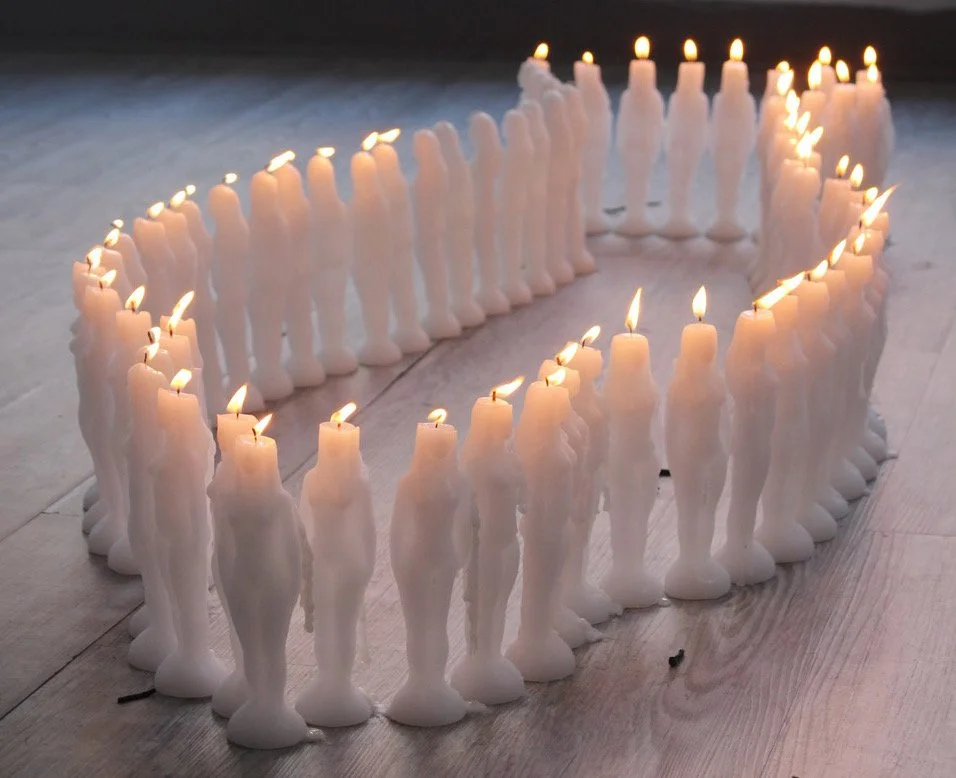Unanswered Prayers, Open-Ended Questions: Reflecting on the Sacred and the Profane in ALTER, a Recent Exhibition at Twelve Gates
“All I know is that I was created; not how, not why” ponders the narrator of video and installation artist Leila Weefur’s PLAY†PREY (2021). The phrase summarizes the complicated relationship between one’s self and one’s identity, the unifying theme of the diverse works included in ALTER, the most recent exhibition at Twelve Gates Arts in Philadelphia’s Old City neighborhood. Curated by Sadaf Padder – an independent curator, writer, and educator based in Brooklyn – the works included in the recently-closed exhibition reflected on the complexities of national, ethnic, religious, and sexual identifications; grappling with these mutable concepts through media that ranged from embroidered paper to 3-D printed sculpture.
Intent on finding the connective tissue that bonds artists of varied cultural and geographic origin, Padder’s curatorial eye lands on diasporic creators that analyze the relationship between the sacred and the secular, the center and the periphery, and what it means to live in a society largely defined by heteronormativity and consumerism. This ambitious project referred to a dizzying array of influences in order to illustrate the commonalities between, for example, an artist of Pakistani origin living and working in the United States (Sanié Bokhari) and a gender fluid black creator born and raised in California (Weefur). Ancient Hindu statuary, the visual grammars of Islamic art, and American public monuments appeared beside one another in the exhibition, asking viewers to reflect on the influence of the past in the present, as well as imagine futures that are free from rigid systems of identification defined by history and colonialism.
The exhibition argued we can achieve such futures by meditating on transience. Variations on this theme appeared in the form of candles in the shape of the Lincoln Memorial and Confederate equestrian statues, now removed from public view, produced from 3D-printed models for The Wax Monuments #05 (2022) by Sandy Williams IV and offered to us partially melted on a silver platter. Shelly Bahl’s Songs of Lament - Ceremonial III (2022) also utilizes sculptural candles that depict devdasi, female dancers in Hindu temples whose societal distinction as artists in service of a particular god in the Hindu pantheon would later be associated with prostitution and outlawed in India under British colonial rule. Arranged to resemble a female body on the gallery’s floor, Bahl’s performance demanded that she lie among the lit candles as Luboš Fišer’s haunting 1993 composition The Lament Over the Ruined Town of Ur fills the gallery with the sounds of mourning, emphasizing that movement towards the various futures imagined throughout the exhibition will necessitate destruction and change that must be commemorated, perhaps even grieved.
Central to what the artists confront, even indict, in ALTER is religion. Textiles that suggest Islamic prayer rugs (sajada) created by Samira Idroos graft brand logos onto images of the Ka’bah in Mecca and a woven inscription that reads “Allah” in a critique of the commodification of organized religion that cheapens its foundation of true faith and spirituality. Beside Idroos’ works, A Yakshi Chronicle (2021) by Suchitra Mattai depicts a group of female nature spirits (yakshi) revered as symbols of abundance among Hindus in South Asia and variously gilded or dyed by Mattai. The final iteration, an ombré statuette colored in shades of pink, asked viewers to reflect on the ways that religion transmogrifies over time, particularly when, like Mattai who is Guyanese but of Indian ancestry, one is separated geographically from one’s ethno-religious homeland. The entanglement of the past and present that pervades the works included in ALTER allows the exhibition to interrogate the nature of time itself, the ability of religion to shape it, and our individual lived realities. Neither a positive nor a negative answer is provided to the question of the role religion will play in the future. Rather, the exhibition left viewers with a constellation of considerations expressed through its diverse artworks, each one an exploration of the artist’s concern with the “how” and “why” of their own existence on Earth and their relation to the sacred.
A previous version of this post erroneously characterized Sanié Bokhari’s identification.



